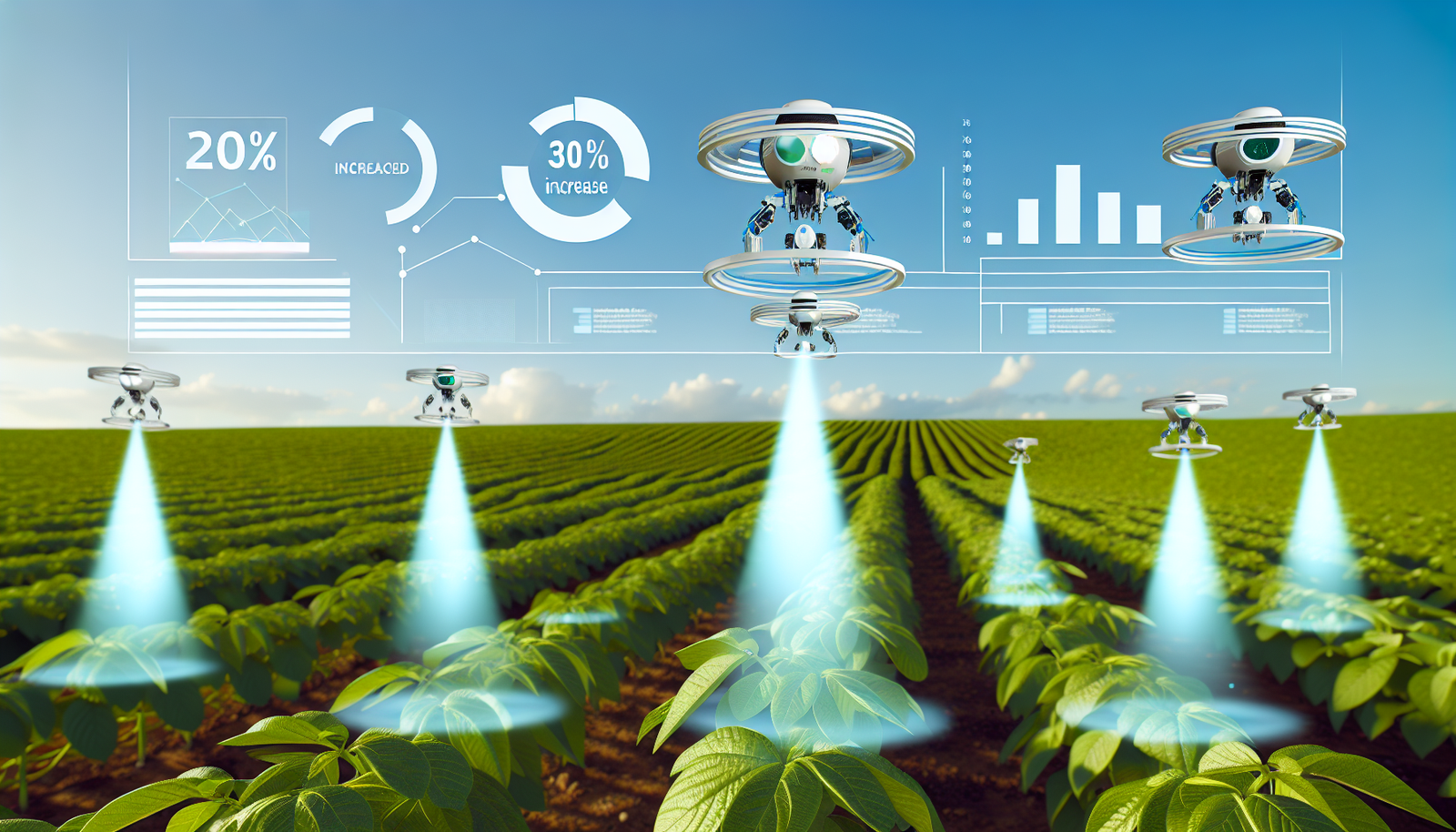Revolutionizing Agriculture: How Robot Equipment for Ultrasound Pollination Achieves a 30% Increase in Crop Yields
Estimated reading time: 8 minutes
Key takeaways:
- Autonomous pollination robots increase crop yields by 30%.
- The total addressable market for these robots is projected at $1 billion by 2033.
- The integration of ultrasound technology provides precision and efficiency for pollination.
- Return on investment is significant, with a projected profit of $900 per customer.
- Deployment examples demonstrate practicality and scalability in real-world agricultural settings.
Table of contents:
Executive Summary
The global agricultural sector is facing significant challenges due to the decline in natural pollinators and escalating labor shortages. Autonomous pollination robots, particularly those utilizing ultrasound technology, have emerged as a promising solution to these issues. These robots have demonstrated a 30% increase in crop yields, showcasing their potential to revolutionize farming practices.
Market Deep Dive
The total addressable market (TAM) for autonomous pollination robots is projected to reach approximately $1 billion by 2033. This substantial market size underscores the growing demand for innovative solutions to address pollination challenges in agriculture. The market is characterized by rapid technological advancements and increasing investments in research and development.
Financial Reality Check
The financial viability of ultrasound-based pollination robots is supported by favorable customer acquisition costs (CAC) and lifetime value (LTV) projections. With an estimated CAC of $500 and an LTV of $1,500 per customer, the return on investment (ROI) is substantial. Gross margins are projected at 60%, resulting in a profit of $900 per customer over the product’s lifespan.
Competitive Advantage Analysis
Ultrasound-based pollination robots offer several unique selling propositions (USPs) that provide a competitive advantage:
- Precision Pollination: Utilizing ultrasound technology allows for targeted and efficient pollination, reducing waste and improving crop yields.
- Labor Efficiency: Automating the pollination process addresses labor shortages and reduces reliance on manual labor, leading to cost savings.
- Sustainability: These robots offer an environmentally friendly alternative to chemical pollination methods, aligning with sustainable farming practices.
Go-to-Market Blueprint
A 90-day launch plan for ultrasound-based pollination robots includes product development, marketing, and scaling operations to capture market demand effectively.
Risk Management & Mitigation
Identified risks include technological challenges, regulatory compliance, and market adoption hurdles. Mitigation strategies involve continuous R&D, proactive engagement with regulatory bodies, and comprehensive marketing campaigns.
Real Success Stories
Case studies of autonomous pollination robots in apple orchards demonstrate the practical benefits and scalability of this technology, leading to increased fruit set and quality.
Implementation Roadmap
The implementation roadmap outlines specific tools and contacts for each phase of the deployment process to ensure successful integration of the technology.
FAQ
- What are the main benefits of ultrasound pollination robots?
They offer precise pollination, reduce labor costs, and are environmentally friendly.
- How do these robots increase crop yields?
By efficiently targeting flowers for pollination using ultrasound technology.
- What is the expected return on investment?
The projected profit is $900 per customer over the product’s lifespan.

